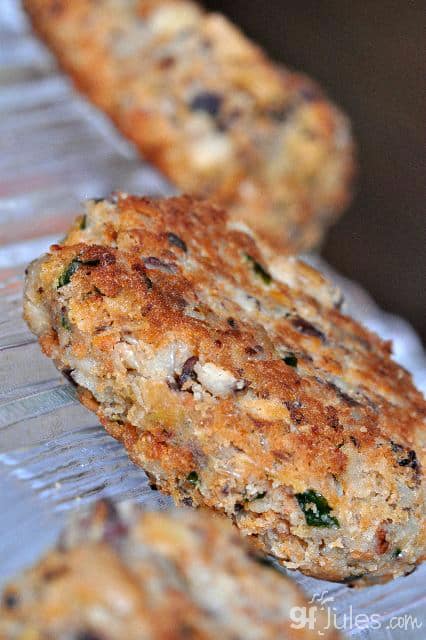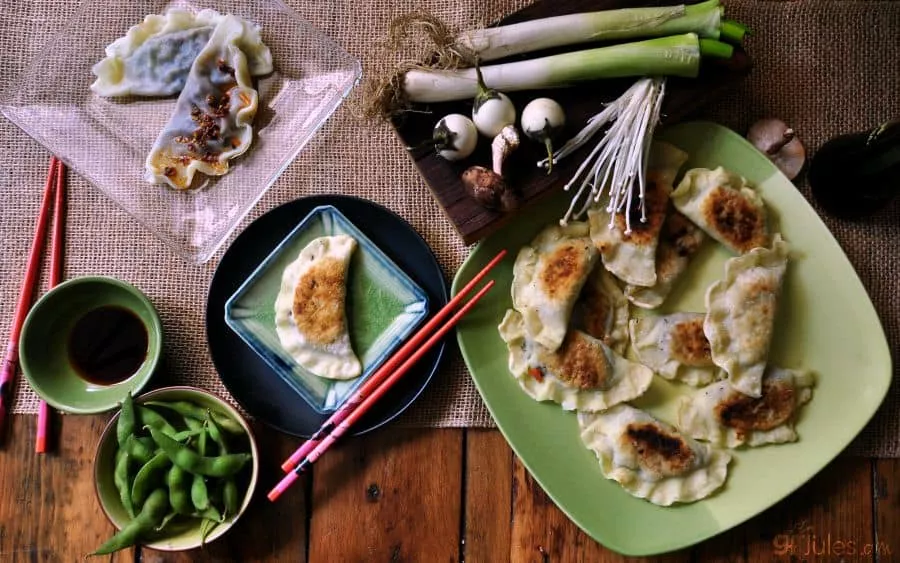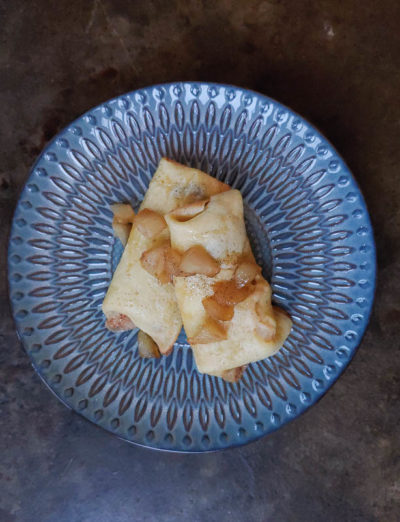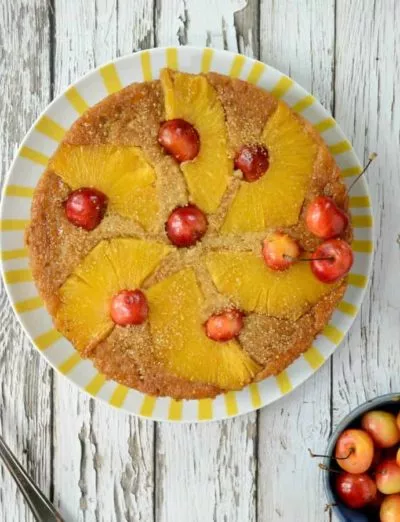A gluten free new year is a special thing. The new year brings with it hopes, reflections, resolutions and food traditions. Yes, food traditions! And many are already gluten free!
Around the world, stories are told of the origins of so many varied foods served on the first day of every new year — hard to tell from whence they really all came — but these gastronomical treasures should not be overlooked!

Tradition holds that these foods bring luck, good fortune and a long life … and hey, they even taste good! So, dive into these lucky culinary traditions and cross your fingers while enjoying a delicious meal!
I hope this year brings you much health, happiness, prosperity and tasty gluten-free food. Cheers!
New Year’s Good Luck Foods
Long Noodles = Long Life:
 An age-old Asian custom entails enjoying long noodles to symbolize a long life –take care not to break the noodles before eating them though! One fun gluten-free option is “Shirataki” noodles, as they may bring not only good luck, but also good health!
An age-old Asian custom entails enjoying long noodles to symbolize a long life –take care not to break the noodles before eating them though! One fun gluten-free option is “Shirataki” noodles, as they may bring not only good luck, but also good health!
Unlike traditional pastas made from grains, these noodles are made of soy tofu and sometimes yam flour as well. With only 20 calories, 3 grams of carbs, 2 grams of fiber and almost no fat per serving, these noodles turn the conventional wisdom regarding grain noodles on its head.
These noodles are naturally gluten-free and come in small packages filled with water, so it only takes a couple minutes to par boil them, and they won’t break before you eat them – even better!
Of course any long (gluten-free) noodles will do! Another new favorite of mine are noodles made from legumes! These noodles from Tolerant Foods are delicious and full of protein and fiber — another good way to start the new year!

Black-Eyed Peas, Please:
On top of these lucky noodles, try a generous helping of black-eyed peas. Legumes like peas, beans and lentils have long symbolized money. Some believe that they even resemble small coins. In my native South, traditional New Year’s fare includes black-eyed peas in a dish often called “Hoppin’ John.”
Some folks even set out to eat a pea for each day in the new year, a custom apparently hailing from the legend that the town of Vicksburg, Mississippi ran out of food during the Civil War, while under attack.
The citizens fortunately found a store of black-eyed peas which helped them outlast the attack and thus, gave them pretty darn good luck. (Try my Hoppin’ John Hushpuppies for a new twist on an old tradition!)

If using dried peas, be sure to rinse and soak them overnight, then rinse them again, adding water to about 2 inches above the level of the peas, and bring them to boil in a large pot.
Cover the legumes and reduce to a simmer for about 3 hours, testing them for doneness regularly. For flavoring, try red chili paste, red curry paste, or other spices like ground turmeric, curry powder, red pepper flakes, salt and pepper.
You can make your gluten free Hoppin’ John with any combination of these spices, adding any or all of them to taste.
Dumplings for New Years
While traditionally made for Chinese New Year (or the Lunar New Year), Chinese Dumplings are just as popular on the calendar New Year! These delicious pockets of dough look like money pouches and represent new year’s fortune and prosperity for those who dine on them.
And lucky for us, I have a delicious gluten free Chinese Dumplings recipe that’s easy for any one to make and to share with dear friends and family! Serve steamed or pan fried.
Don’t Forget Your (Folded) Greens:
Another New Year’s food to try is cooked cabbage. I know cabbage may not sound romantic, but greens like cabbage, collards, kale and chard are traditionally consumed around the world on New Year’s Day because their cooked green leaves look so much like folded money — and who couldn’t use some economic good fortune?!
Most of us are familiar with the German sauerkraut dish, but the Danish actually like theirs stewed and sprinkled with sugar and cinnamon (me too!).

Gluten Free New Year’s Cabbage
Ingredients
- 1/2 small onion diced
- 2 Tbs. olive oil
- 1 small head of cabbage rinsed and chopped
- 3 Tbs. water
- 2 Tbs. balsamic vinegar
- 1 1/2 tsp. granulated cane sugar
- salt and pepper to taste
Instructions
- In a large skillet over medium heat, cook onions in oil until lightly browned.
- Cut cabbage into strips and add to cooked onions, together with the water, covering to steam. Stir the cabbage and water until wilted, around 15 minutes.
- In a small bowl, stir together the remaining ingredients to form a thin sauce. Pour over the cooking cabbage and continue stirring until warm. Remove from heat and serve immediately.
Notes
** Please keep in mind that nutrition information provided is per serving, which may vary. While we have taken care to provide you with the most accurate nutritional values possible, please note that this information may differ significantly depending on the exact ingredients and brands that you choose to use to make this recipe. Additionally, where options are given for ingredients, the resulting calculation may include all ingredient options instead of only one per line, skewing the totals significantly.
Pin for later!






































I avidly read your recipes and have to make substitutions as I am in the UK. I also have kidney failure and dialysis so my food regime is more difficult with lots of protein but small meals. They can be boring so I try to make my own where I can at least make them tasty. I find a lot of the processed foods are bland and have an unpleasant after taste. Thank you so much. Your recipes are an inspiration.
Hi Alexandra, I am so glad you find my recipes inspiring and that you are able to use them with some substitutions, even in the UK. Thanks so much for taking the time to let me know! Wishing you a healthy new year!
~jules
Pt 2. I am currently reading your book The First Year Celiac Disease. I read the first chapter and cried. Thanks so much as I am still feeling sorry for myself but I did take the first step and went to a local health food store called Roots in Clarksville, expensive but worth it. My concern is I’ve stayed away from rice and corn and ate lots of multigrain whole wheat as it has a lower glycemic index. I really want to lose the 15 pounds I’ve gained. Can I do this gluten free without completely giving up carbs other than veggies and fruit?
Hi Gina-
Your instincts to steer toward grains with a lower glycemic index is a good one, whether you are gluten-free or not. Perhaps surprisingly, there are more gluten-free grains available than there are gluten-containing grains, and many of those GF grains and pseudo-cereals have a low glycemic index.
Depending on the recipes you are looking to prepare, some of these grain/pseudocereal options can easily be worked into your diet at home: quinoa instead of rice as a side dish; buckwheat flour in your pancakes; flaxseed meal added to all your baked goods … these are all great places to start.
Just as it was when living with gluten, no one loses weight with cookies! All things in moderation, and try to make as many of your foods at home as possible so you can control the ingredients. Steer clear of prepared/manufactured foods wherever you can, as you’ll find that the gluten-free varieties often have more fat and calories in order to cover up for bad tasting flour. At home, I can use my GF All Purpose Four which has no taste or gritty texture in order to make anything I want and reduce the fats, eliminate hydrogenated oils and cut the sugar. When I make breads, granola, and even many pies, I use nuts, high fiber/high protein grains or pseudocereals to boost nutrition and reduce the glycemic index. I’ve also been experimenting a lot with agave syrup and coconut palm sugar with great results!
Take heart – once your body is regulated again and getting the proper nutrition from your foods, you will find a balance, return to your former energy level and you will lose that weight! You don’t sound like the type to buy a bag of cookies and binge, so don’t worry. The most important thing is to help your body rebound from celiac damage — when your body has healed, and you have time to play with gluten-free recipes, it will fall into place.
Hi Gina, just found this website and read your post. Roots is a bit expensiive, but I always check out their “mark-down” shelf for an inexpensive way to try new items (since GF foods do tend to be a bit pricey!). If you haven’t already found the following, I’d suggest trying David’s Natural Market in Columbia (in Wilde Lake, I think) and My Organic Market (aka: MOM’s) in Jessup at Routes 1 & 175. Wegman’s (coming to Columbia in June 2012) also has a reasonable selection of GF foods. Also try Trader Joe’s.
Happy New Year and god bless you. I just was finally tested and received results that confirmed my self diagnosis of celiac disease. I am 52 and was an avid fitness buff and trainer until two years ago when I began experiencing fatigue, joint pain, severe bloating, embarrassing and explosive gas etc. I also gained 15 lbs and I was told it was hormonal which I initially accepted as the answer. My 80 yr old dad endured gastro distress and all kinds of testing for at least 30 hrs and as recently as last year received an IBF diagnosis! And so my internist and gastroenterologist assumed that was the case for me to.
Thank goodness you finally received the correct diagnosis, Gina! It’s so awful to suffer and to feel like you are being treated as if it’s in your head when you know there is something really wrong. I hope you are feeling so much better now and you are back to being active and feeling good again now that you know what not to put into your body and what not to!!!
~jules
Jules,
With New Years, comes resolutions. Since my diagnosis in May, I have gained 15 lbs. Do you have any suggestions for how to eat low cal/fat. You look great, what is your secret?
Kim
You’re too sweet, Kim! I find that folks who have put on more weight after going gluten-free are eating more processed, pre-packaged foods, and making less of their foods at home.
We’re all searching for solutions to save time, but most manufactured GF foods are higher in calories, fat, sugar, and lower in fiber and protein. There are many reasons for this, the biggest culprit seems to me that food manufacturers are trying to cover up for bad tasting or gritty GF flours by adding sugar and fat. At home, I can control for this in my own baking because my flour doesn’t have any aftertaste and isn’t gritty. Thus, my recipes can be lower in fat and sugars and still taste delicious! I also add more fiber and protein in where I can, especially in my breads, and I use sugar subs like agave where it’s easy to substitute for honey or molasses.
These are just some things I do that have proven successful for me. Take a look at the products you are buying and what you eat on a daily basis – sub in a banana or apple and peanut butter for a snack instead of pretzels and crackers, for example, and try to make as many foods at home as you can so you can control the taste, nutrition, and fat/sugar/calories. Best of luck in the new year!!!
Hi Jules and Kim
I actually lost 27 pounds after my diagnosis, mostly because of ALL the items I was now allergic to and could not eat.
I initially ate just fruit and vegetables and some proteins for lack of any other diet ideas.
I have slowly continued to loose a few pounds a month (a very good thing in my case) but I also try to limit my intake of sweets (very difficult for me).
FYI. . . I always cook my own meals….never eat processed or packaged foods due to preservatives and colors added and knowing that processed foods are bad for our body.
Good luck Kim and tons of loving thanks to Jules for providing great recipes and products to make my gluten-free lifestyle easier to bear <3
Thank you, Erika! So glad to be able to help in any way. And a Happy and Healthy New Year to you!